2022 annual licenses Are Valid Through March 31
Heads up, hunters and anglers! All 2022 annual licenses are valid through March 31, 2023. The 2023 licenses go on sale in January. Order yours as soon as you can.
Have questions? To ask about your online license system account, license-purchasing errors, or deer control permits, email INHuntFish@dnr.IN.gov or call 317-232-4082.
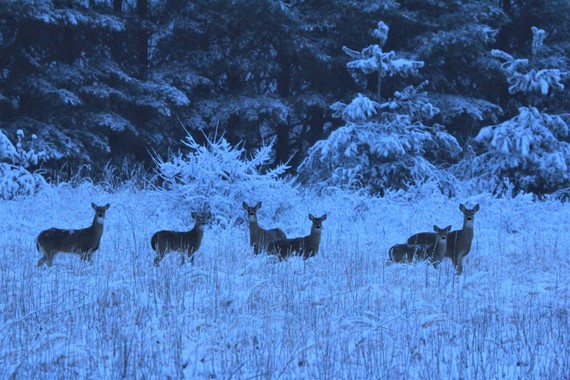
Hunting and trapping seasons ending soon
Say goodbye to your favorite hunting seasons, closing at the end of January:
Deer Archery Season: Ends Jan. 1
Deer Reduction Zone:Â Ends Jan. 31
Turkey Fall Archery: Ends Jan. 1
Raccoon & Opossum (hunting, trapping):Â Ends Jan. 31
Gray & Fox Squirrel:Â Ends Jan. 31
Quail (South of I-74):Â Ends Jan. 10
Mink, Muskrat, & Long-tailed Weasel (hunting, trapping):Â Ends Jan. 31
Red & Gray Fox (trapping):Â Ends Jan. 31
Dove: Ends Jan. 2
North Zone Duck: Ends Jan. 3
Central Zone Duck:Â Ends Jan. 8
South Zone Duck:Â Ends Jan. 22
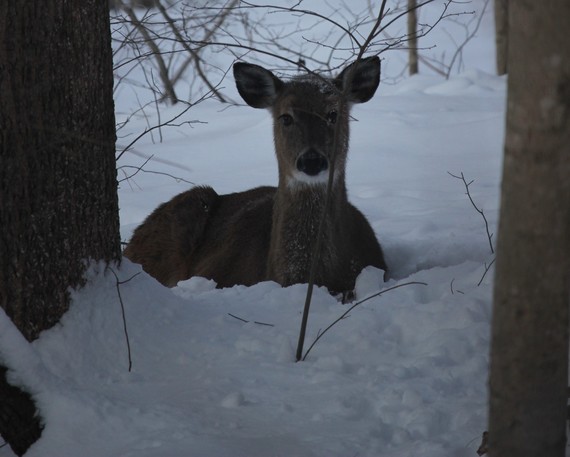
Deer hunters, there’s still time
Don’t fret—you still have time to harvest your deer. Archery season ends Jan. 1, and reduction zone season runs until Jan. 31. Want to check out all our deer data? Find current harvest numbers on our website.

Hot tips for cold fish
After you’ve practiced all the safety measures, check out our guidelines for reeling in a great catch while ice fishing:
- For novice anglers, be sure to fish on a day that has mild weather temperatures, low wind, and a bit of sun.
- Target bluegill, as they’re plentiful this time of year.
- Use a light line and a small jig tipped with live bait for the best odds of catching fish.
- To attract largemouth bass, use flashy jigging baits or set tip-ups to cover more area.
- Both bluegill and bass can be typically found around vegetation. Fishing near the edge or above weeds can give you the best chance for success.
Lakes and many depth maps are on the Where to Fish Interactive Map.
Report sick or dead wildlife this winter
Have you seen any fish or wildlife showing odd behaviors or signs of disease? DNR encourages you to report them using our reporting system. DNR is especially interested in incidents involving the death of five or more animals, recurring deaths of animals in the same location over a period of time, deer exhibiting signs that may indicate chronic wasting disease or epizootic hemorrhagic disease, or incidents involving threatened or endangered species.
DNR appreciates your reports, as they help us track wildlife health over time and detect potential disease outbreaks in the state.
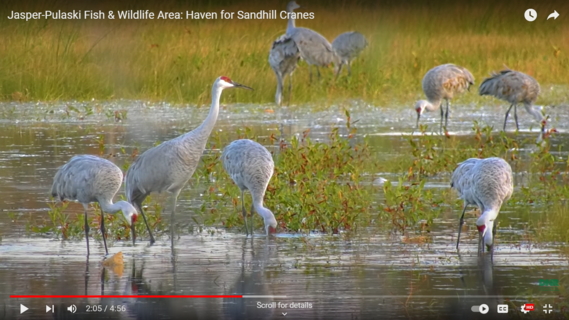
A long time ago, in a Fish & Wildlife area far, far away…
Wondering where it all began? This month, we’re highlighting Indiana’s first Fish & Wildlife area, Jasper-Pulaski, and showcasing its scenic landscape, wildlife, and recreation opportunities. Watch our new video for stunning views of JP’s wildlife and information about the many activities to do on the property.
Interested in Jasper-Pulaski’s sandhill crane counts for 2022? We’ve got them all lined up for you.

LARE applications due Jan. 15
The Division of Fish & Wildlife’s Lake and River Enhancement (LARE) program helps protect and enhance aquatic habitat across Indiana. To accomplish this, the LARE program provides technical and financial assistance for qualifying projects on public waters. Want to apply? This year’s LARE applications are due by Jan. 15. Check out our handy guide on how to apply for one of the grants.
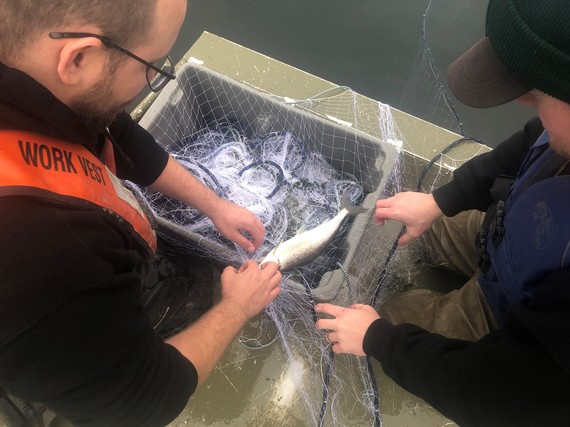
DNR collecting cisco in collaboration with USGS
During winter, cooling water temperatures signal the migration of cisco, a cold-water species native to Indiana’s inland glacial lakes. These slender, silver-colored fish spend most of the year 75 feet below the surface but during December migrate to their traditional spawning areas, the shallow waters of Crooked Lake in Noble County.
For the second consecutive year, Indiana DNR fisheries biologists collected cisco on Crooked Lake in partnership with researchers from the United States Geological Survey (USGS). This is part of a collaborative project to compare the cisco’s tolerance of its habitat’s temperature to that of more northern populations elsewhere in the Midwest. This project will provide a better understanding of possible differences in temperature tolerances between populations, information that will help managers select appropriate source populations for future restoration efforts.
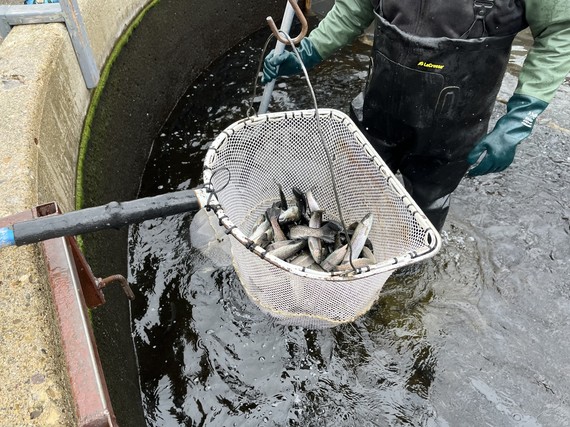
DNR stocks coho salmon and steelhead trout fingerlings in northwest Indiana streams
Fresh fish alert! Staff from Mixsawbah State Fish Hatchery recently stocked the Little Calumet River, Trail Creek, and Salt Creek with fall fingerling steelhead and coho. The East Branch Little Calumet River received 71,077 winter-run steelhead and 45,142 coho. Trail Creek received 47,575 winter-run steelhead and 48,336 coho, while Salt Creek received 27,523 Skamania steelhead.
The fingerlings stocked this fall will stay in the streams until next spring, when they will migrate to Lake Michigan. They will spend one to two years there feeding and maturing until they return to spawn in the streams where they were stocked.
Anglers, be aware of recently stocked fish when fishing these areas. These fingerlings are currently under the legal size limit and are sensitive to being caught. If you catch undersize fingerlings, consider moving to a different area of the stream or try switching your method of fishing. These new fish are crucial to the continued existence of the northwest Indiana trout and salmon fishery.
Check out more information on Mixsawbah State Fish Hatchery.
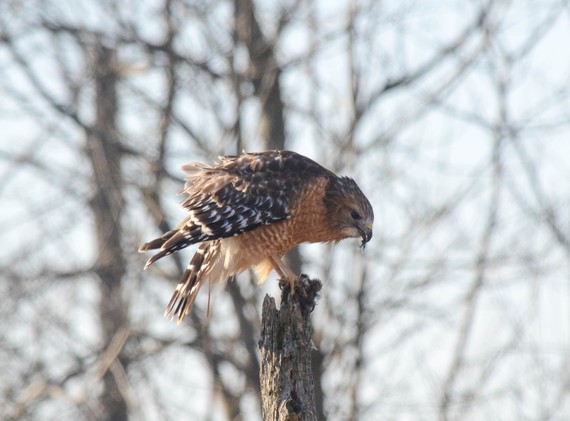
Winter birding opportunities at Hovey Lake FWA
Bird is the word this winter! During these cold months, guests at Hovey Lake FWA can observe a variety of birds, as waterfowl are drawn to Hovey’s wetland habitat that covers hundreds of acres. Birders can catch a glimpse of eagles building nests around the property, or they can see raptors, such as Northern harriers and red-shouldered hawks winter alongside the ever-popular owls. The property will reward birders with hours of enjoyment.
Want to learn more about Hovey Lake FWA? See more details about the scenic property on our site.
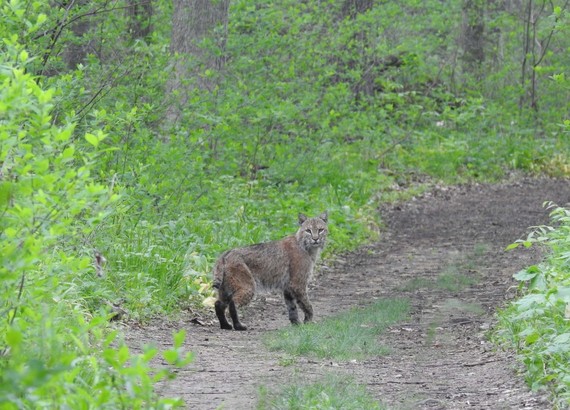
Bobcat basics: Indiana’s only native wild cat
Bobcats are present throughout Indiana, especially in its southern parts, and are more commonly seen in the winter. DNR collects reports of bobcat sightings, trail-camera photos, and mortalities through our Archer’s Index, report a mammal form, and Snapshot Indiana.
A bobcat’s diet includes rabbits, mice, squirrels, and more. Like all wildlife, bobcats should not be fed or approached by humans. They’re unlikely to attack except when threatened or protecting their young. If you’re having trouble with a bobcat that’s damaging your property or disturbing your poultry, you may request a nuisance wild animal control permit from DNR. Landowners or lessees may also hire a nuisance wildlife control operator to assist them if they are not comfortable removing the bobcat themselves. Bobcats may not be removed without a permit.
Have more questions about bobcats and bobcat sightings? We’ve got you covered.
Wade into our annual waterfowl workshop this February
Are you ready for our annual waterfowl workshop? The annual event takes place on Feb. 1 from noon to 3:30 p.m. at Fort Harrison State Park. If you’re a contractor desiring to become a Waterfowl Control Operator (WCO), remember that this workshop is required. First-time WCOs must attend the workshop, and all other WCOs must attend or test out of the workshop.
Register for the workshop by Jan. 23. To register, contact Jessica Merkling, urban wildlife biologist, at jmerkling@dnr.IN.gov or 260-244-6805.
For more details, check out our event listing.
Photo by USFWS.
Public meetings Jan. 6 & 7 about Lake Michigan stocking
Make your voice heard! We’re holding two public meetings to discuss the current Lake Michigan Chinook salmon stocking plan and how we’ll be soliciting public input to guide stocking strategies for the future. Come listen to our proposed stocking strategies, as well as our presentation of data from the fall Chinook fishery. We hope to see you there!
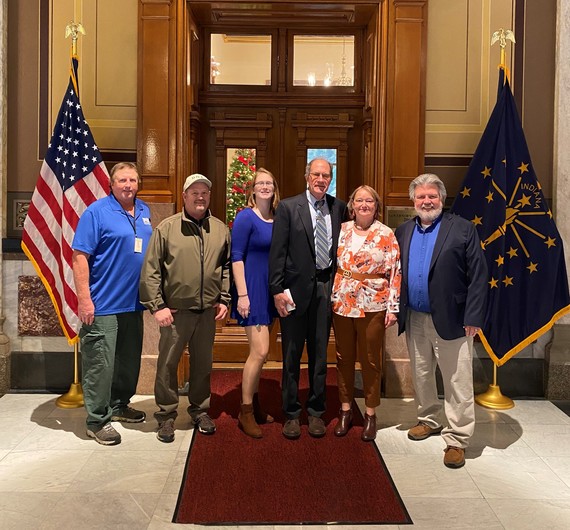
Hatcheries staff recognized for long-term employment
One fish, two fish, 35 fish, 40 fish! On Dec. 9, Gov. Holcomb honored long-term state employees at his Long-Term Employee Reception in the Indiana Statehouse. DNR celebrated three Fish & Wildlife hatcheries staff:
35 Years
- Robin Bruegmann – Property Manager, Driftwood State Fish Hatchery
- Tim Prowant – Laborer, Mixsawbah State Fish Hatchery
40 Years
- David Clary – Property Manager, Fawn River State Fish Hatchery
Please help us thank Robin, Tim & Dave for their outstanding service to the residents of Indiana. We couldn’t do our work without them!
Recent news releases
Register for 2023 Waterfowl Workshop by Jan. 23
Indiana DNR holds public meetings for Lake Michigan Chinook salmon stocking strategy |